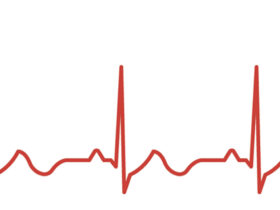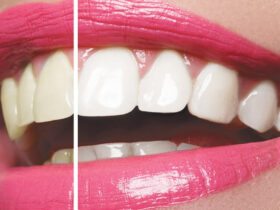As the summer sun reaches its peak intensity, July marks an important reminder of the need for UV safety. Ultraviolet (UV) radiation from the sun’s rays can have severe consequences for our eye health, particularly when it comes to the development of cataracts. This UV Safety Month, it’s crucial to understand the risks and take proactive measures to safeguard your vision.
The Threat of Excessive UV Exposure
UV radiation, categorized as UVA, UVB, and UVC, is an invisible form of electromagnetic radiation emitted by the sun. While UVC rays are largely blocked by the Earth’s atmosphere, UVA and UVB rays can penetrate and cause harm to the eyes and surrounding skin.
Prolonged exposure to UV rays, especially without proper protection, can lead to various eye conditions, including cataracts. Cataracts are a clouding of the eye’s natural lens, which can impair vision and, if left untreated, may eventually lead to blindness.
The Formation of Cataracts
The lens of the human eye is primarily composed of water and protein. When exposed to excessive UV radiation over time, the protein structures within the lens can become damaged and clump together, causing the lens to become opaque or cloudy. This cloudiness is what we refer to as a cataract.
Initially, cataracts may not significantly impact vision, but as they progress, they can cause blurred or double vision, sensitivity to light and glare, and a diminished perception of colors. Cataracts are a leading cause of visual impairment worldwide, and the risk increases with age, UV exposure, and other factors such as diabetes, smoking, and certain medications.
Protecting Your Eyes from UV Damage
The good news is that cataracts are largely preventable by taking appropriate precautions against UV exposure. Here are some simple yet effective strategies to incorporate into your routine:
1. Wear Sunglasses: Invest in high-quality sunglasses that offer 100% protection against both UVA and UVB rays. Look for sunglasses labeled as “UV400,” which block all UV rays up to 400 nanometers in wavelength.
2. Use Hats and Shades: Broad-brimmed hats and shades can provide additional protection by blocking UV rays from entering the eyes from various angles.
3. Limit Midday Sun Exposure: The sun’s rays are strongest between 10 a.m. and 4 p.m., so try to minimize outdoor activities during these peak hours or seek shaded areas when possible.
4. Apply Sunscreen: While sunscreen is primarily designed to protect your skin, it can also offer some protection for the delicate areas around your eyes. Apply a broad-spectrum sunscreen with an SPF of 30 or higher.
5. Consider UV-Blocking Lenses: For those who wear eyeglasses or contact lenses, consider investing in lenses with built-in UV protection to further shield your eyes from harmful rays.
Early Detection and Treatment
Regular eye exams are crucial for detecting cataracts in their early stages, when treatment options are more effective. If cataracts are diagnosed, your eye care professional may recommend various treatment options, including:
1. Prescription Eyeglasses or Contact Lenses: In the early stages, updated prescriptions may help improve vision while managing the cataract.
2. Cataract Surgery: For advanced cataracts, surgery to remove the clouded lens and replace it with an artificial intraocular lens is often recommended. This procedure is generally safe and effective in restoring clear vision.
By prioritizing UV safety during the summer months and throughout the year, you can significantly reduce your risk of developing cataracts and other eye-related issues. Remember, taking proactive steps to protect your eyes today can help ensure clear vision for years to come.
JON R. BERLIE, M.D.
LASIK, Cataract & Lens Replacement Surgeon
Dr. Berlie is a board-certified ophthalmologist who specializes in LASIK and premium lens cataract surgery. He has been serving the Naples community for over 20 years. Dr. Berlie achieves superior visual outcomes for his cataract patients by utilizing the latest lens technology combined with state of the art equipment. His expertise in this area has led the Center For Sight Naples office to be recognized as the “Best Eye Center” in Naples, FL for the past 15 years. In addition to laser cataract surgery, Dr. Berlie performs vision correction procedures including All Laser LASIK, Epi-LASEK, Refractive Lens Exchange (RLE) and Implantable Contact Lenses. He is also skilled in reconstructive and cosmetic eyelid surgery. He has been honored as one of America’s “Top Doctors” by the prestigious Top Doctors list, published annually by Castle Connolly Medical, Ltd.
Dr. Berlie completed his undergraduate training at the University of Victoria in British Columbia, Canada and the California State University of San Bernardino where he received the California State University of San Bernardino Research Scholarship Award. He then attended Creighton University School of Medicine in Omaha, Nebraska where he graduated Cum Laude, was elected as Class President, and received the Senior of the Year Award. He completed his internship in internal medicine also at Creighton University Medical Center.
Dr. Berlie continued his education at the University of Nebraska Medical Center where he completed his ophthalmology residency and received the awards of Chief Resident and the Resident of the Year Award. Dr. Berlie then went on to Saint Anthony Hospital in Oklahoma City to complete his fellowship training in Oculoplastic and Aesthetic Laser Surgery.
Center for Sight Southwest Florida
239-310-2020
www.centerforsightswfl.com
700 Neapolitan Way, Naples, FL 34103









